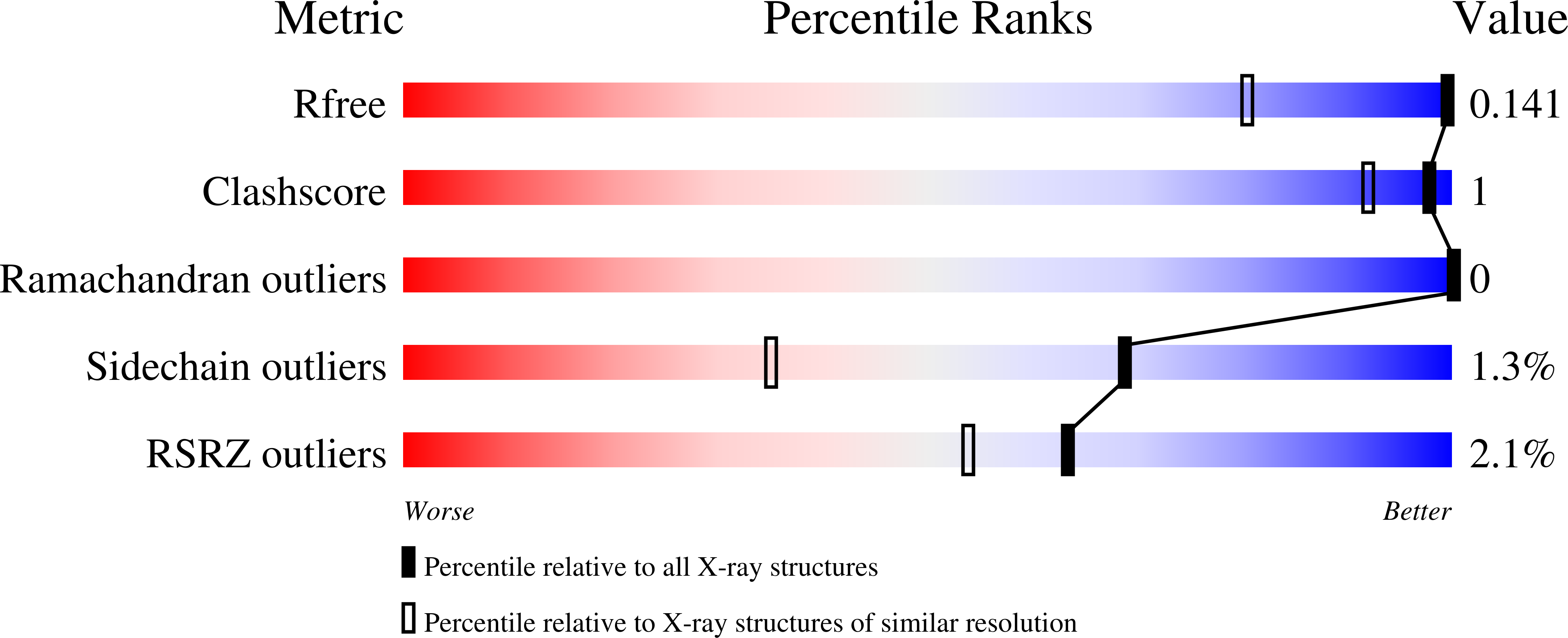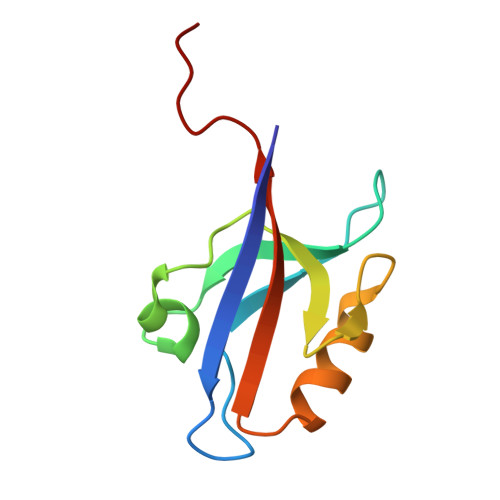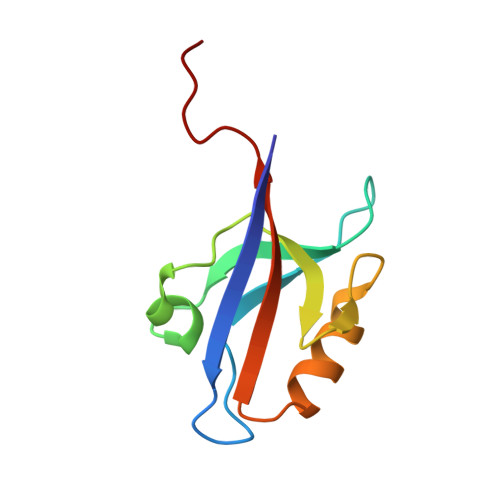Electric-field-stimulated protein mechanics.
Hekstra, D.R., White, K.I., Socolich, M.A., Henning, R.W., Srajer, V., Ranganathan, R.(2016) Nature 540: 400-405
- PubMed: 27926732
- DOI: https://doi.org/10.1038/nature20571
- Primary Citation of Related Structures:
5E11, 5E1Y, 5E21, 5E22 - PubMed Abstract:
The internal mechanics of proteins-the coordinated motions of amino acids and the pattern of forces constraining these motions-connects protein structure to function. Here we describe a new method combining the application of strong electric field pulses to protein crystals with time-resolved X-ray crystallography to observe conformational changes in spatial and temporal detail. Using a human PDZ domain (LNX2 PDZ2 ) as a model system, we show that protein crystals tolerate electric field pulses strong enough to drive concerted motions on the sub-microsecond timescale. The induced motions are subtle, involve diverse physical mechanisms, and occur throughout the protein structure. The global pattern of electric-field-induced motions is consistent with both local and allosteric conformational changes naturally induced by ligand binding, including at conserved functional sites in the PDZ domain family. This work lays the foundation for comprehensive experimental study of the mechanical basis of protein function.
Organizational Affiliation:
Green Center for Systems Biology, UT Southwestern Medical Center, 6001 Forest Park Road, Dallas, Texas 75390, USA.


















